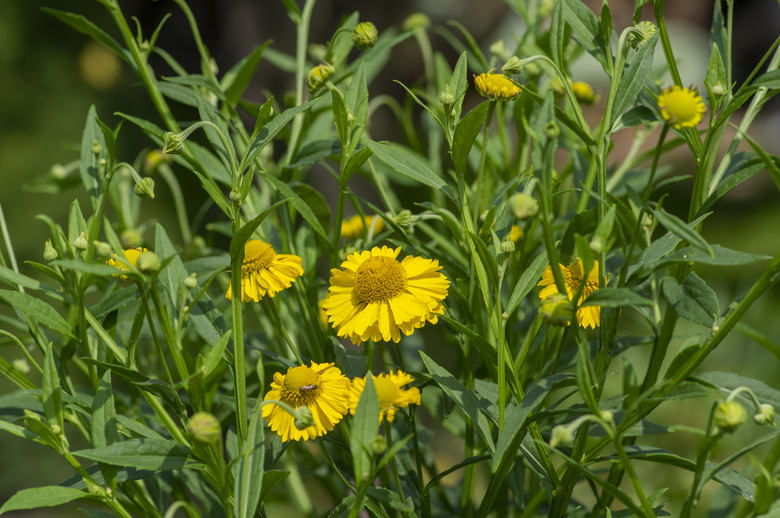How To Kill Bitterweed In A Pasture
The image of bitterweed (Hymenoxys odorata) — yellow flowers sprouting in the pastures and rangeland of the Southwest — may cause farmers and ranchers to groan. This yellow-flowered plant, a member of the aster family (Asteraceae), is poisonous when eaten by sheep, cows and other livestock.
What Is Bitterweed?
If bitterweed grows in your area, it's important to recognize what it is before it affects your livestock. Getting rid of bitterweed before it becomes a problem is the easiest way to control it. Bitterweed is an annual with straight stems that grow up to 2 feet. The plant bears yellow flowers that surround a yellow seed head. Bitterweed multiples because winds pick up these seeds and spread them.
Bitterweed grows across a swath of the Southwest, mostly from southern Kansas south to Mexico and from central Texas to California. Livestock often try to graze on bitterweed in winter and early spring when other foliage is dormant. Bitterweed grows best in spring and early summer, but the plant may bear seedlings at any time of the year depending on rain and temperature.
Bitterweed has a close cousin, pingue (Hymenoxys richardsonii), a perennial that resembles bitterweed and has a similar toxic effect on livestock. Like bitterweed, livestock won't eat pingue if grass and other forage are available. Another type of bitterweed, Helenium amarum, grows in southeastern and south central states and is toxic to livestock when eaten in very large quantities.
Control Bitterweed in Pastures
If you have bitterweed growing in your pasture, you want to eliminate it because it is particularly toxic to sheep. Sheep are more likely than other livestock to eat bitterweed. Its name comes from the sour milk produced by animals that eat the plant.
Bitterweed not only makes milk taste sour but it also tastes bitter to most livestock. Unless there is no other forage available, livestock will typically not eat bitterweed. One way to control the growth of bitterweed without using pesticides is to mow it and to plant vigorous perennial grasses, which will then crowd out the bitterweed. Another way is to rotate livestock through various pastures.
You can control bitterweed with pesticides applied from fall to early spring but make sure livestock are not feeding in the pasture. Use 2,4-D, picloram, clopyralid or metsulfuron no later than early spring, before the plant starts to flower. Be sure to follow the directions on the label when applying the herbicide and heed any precautions, especially the time frame before re-introducing livestock to the pasture.
Signs of Bitterweed Poisoning
If you have livestock, particularly sheep, that have eaten bitterweed, remove them from the pasture containing bitterweed and give them water with electrolytes. Feeding methionine and soybean meal may help. If there's a possibility that livestock may eat bitterweed, feeding onions high in cysteine may ward off the negative effects of bitterweed.
Sheep that have eaten bitterweed may seem depressed and may grind their teeth. They often hunch up to try and ease stomach pain. Bits of vomit may show around their nose and lips. Cattle will show similar effects if they've eaten large quantities.
Most animals do recover if they're removed from bitterweed at the first sign of poisoning and are put onto pastures of healthy pasture grass. Symptoms usually show within two to four weeks of grazing bitterweed. There is no treatment, and livestock left on a pasture infested with bitterweed will likely not survive.
